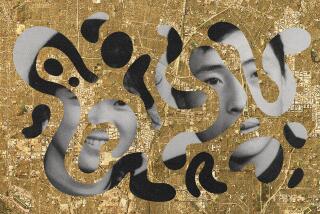Not so much as a dribble remains...
- Share via
Not so much as a dribble remains of the artesian wells that once irrigated vast fields of sugar beets on a farming outpost about 20 miles southeast of downtown Los Angeles.
Gone, too, are the cows that replaced the beets during the Great Depression, when Dutch and Portuguese immigrants helped turn the quiet community of Artesia--so named for the source of its trickling lifeblood--into Southern California’s largest supplier of dairy products.
Yet this remarkably diverse bedroom community has persevered. Through challenges that now include a dwindling tax base, Artesia has maintained a small-town atmosphere in which some residents trace their roots back several generations.
Founded in 1875 on a remote portion of the Rancho los Coyotes Spanish land grant, Artesia was originally the farming destination of settlers from Iowa and Maine. Besides sugar beets, they planted grapes, eventually opening the Artesian Winery Co.
But the city’s vineyard era ended abruptly in 1909 when an explosion blew out two of the winery’s walls. Accounts of the event differ, though one story has it that an inspector lighted a match to see inside the darkness of a drained sherry tank.
The Los Angeles metropolitan area’s thirst for milk transformed the city in the 1920s as herds were brought in, and dairy operations soon surrounded the city center. The urban area to the northwest had a more lasting effect decades later, when it started looking to Artesia not just as a source of milk, but also as a source of real estate. By the 1950s, spiraling land prices forced many farmers to move to such places as Chino and Visalia.
Some farmers tried to avoid the move in 1956 by banding together and incorporating as Dairy Valley, a city that bordered then-unincorporated Artesia on three sides. But Dairy Valley, which would later rename itself Cerritos, also succumbed to the real estate market and the farmers left.
Artesia incorporated in 1959, when it was home to 9,500 people. Today its two square miles contain a population of more than 15,000, many of whom immigrated during the 1980s from countries such as China, India, Japan, South Korea and the Philippines.
Perhaps the most visible of the city’s many ethnic enclaves is that of the Indian merchants whose jewelry, restaurant and video rental businesses along Pioneer Boulevard have given rise to the nickname Little India. Many of these shopkeepers have lobbied to have the designation posted on the Artesia Freeway, but their efforts have been overruled by city officials who say such a label would discriminate against other cultures.
In the 1970s, Portuguese descendants of the city’s original dairymen built their own cultural stronghold, a ring for traditional bloodless bullfights.
Rich in cultural diversity, Artesia is nevertheless short on municipal revenues. As a mostly residential community with only light industrial and commercial development, the city struggles to supplement its meager tax base. City sewers and roads need work, yet money to fix them has become even more scarce since city voters last month rejected a 2% tax on city utilities.
By the Numbers
CITY BUSINESS
Date incorporated: May 29, 1959
Area in square miles: 2
Number of parks: 4
City employees: 39 fulltime; 21 part time
1996-97 operating budget: $12 million (excludes capital and restricted funds)
ETHNIC MAKEUP
Latino: 40%
White: 42%
Asian: 15%
Black / Other: 3%
PEOPLE
Population: 15,464
Households: 4,368
Average hopusehold size: 3
Median age: 31
MONEY AND WORK
Median household income: $36,383
Median household income / L.A. County: $34,965
Median home value: $204,100
Employed workers (16 and older): 7,325
Women in labor force: 51%
Men in labor force: 76%
Self-employed: 393
Car-poolers: 1,111
FAMILIES
Married couple families with children: 35%
Married couple families with no children: 26%
Other types of families: 18%
Nonfamily households: 21%
RETAIL STORES
Total stores: 279
Total employees: 1,621
Annual sales: $161 million
Source: Claritas Inc. retail figures are for 1995. All other figures are for 1990. Percentages have been rounded to the nearest whole number.
More to Read
Sign up for Essential California
The most important California stories and recommendations in your inbox every morning.
You may occasionally receive promotional content from the Los Angeles Times.













